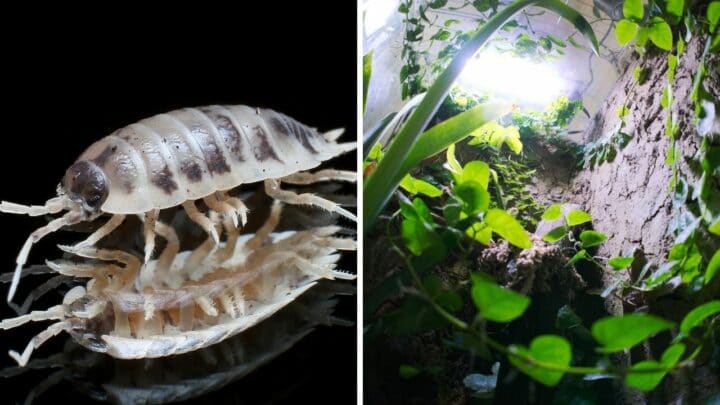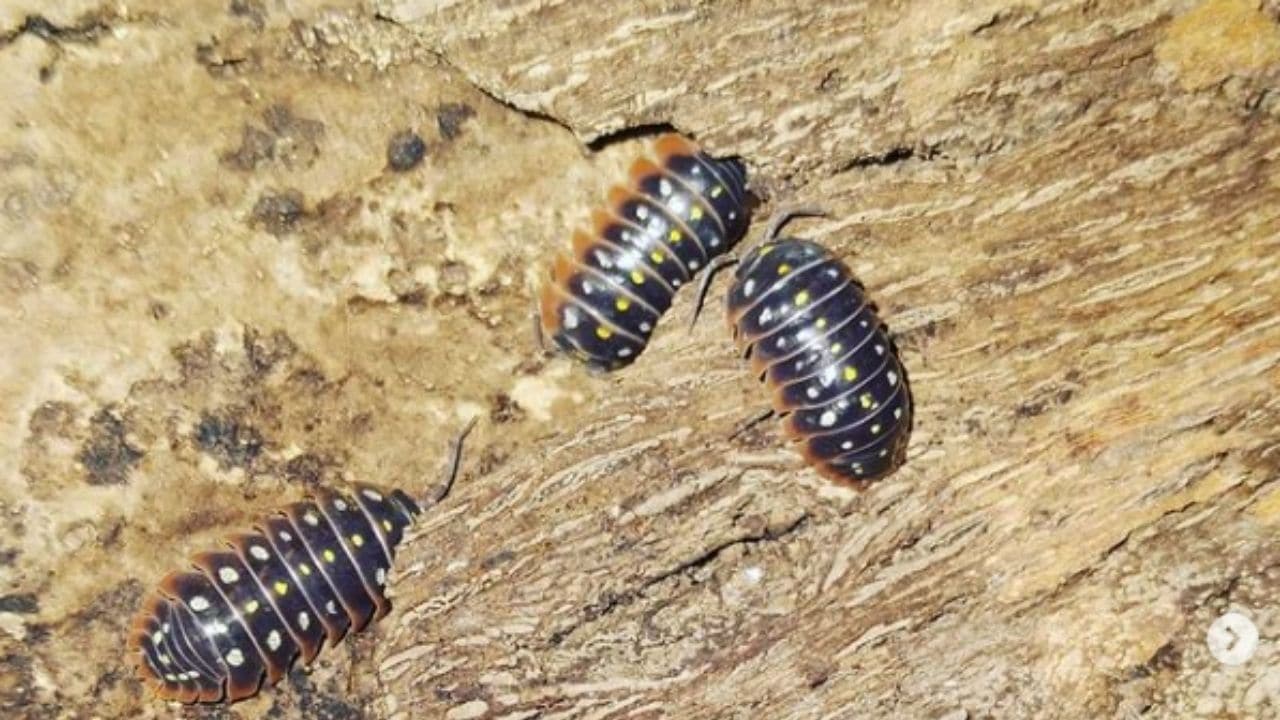Deciding which isopods to put in your vivarium can be quite of a challenge as there are various species to choose from.
But, don’t you worry, as we’re here to find out what isopod species should you place in your lovely vivarium.
Best Isopods for a Vivarium
The best isopods for a vivarium include the following: peach isopod, clown isopod, zebra isopod, yellow dot, powder blue, dalmatian, orange dalmatian, dairy cow, dwarf striped, high yellow. If the isopods are about the same size, they will do well in a vivarium.
1. Peach Isopod
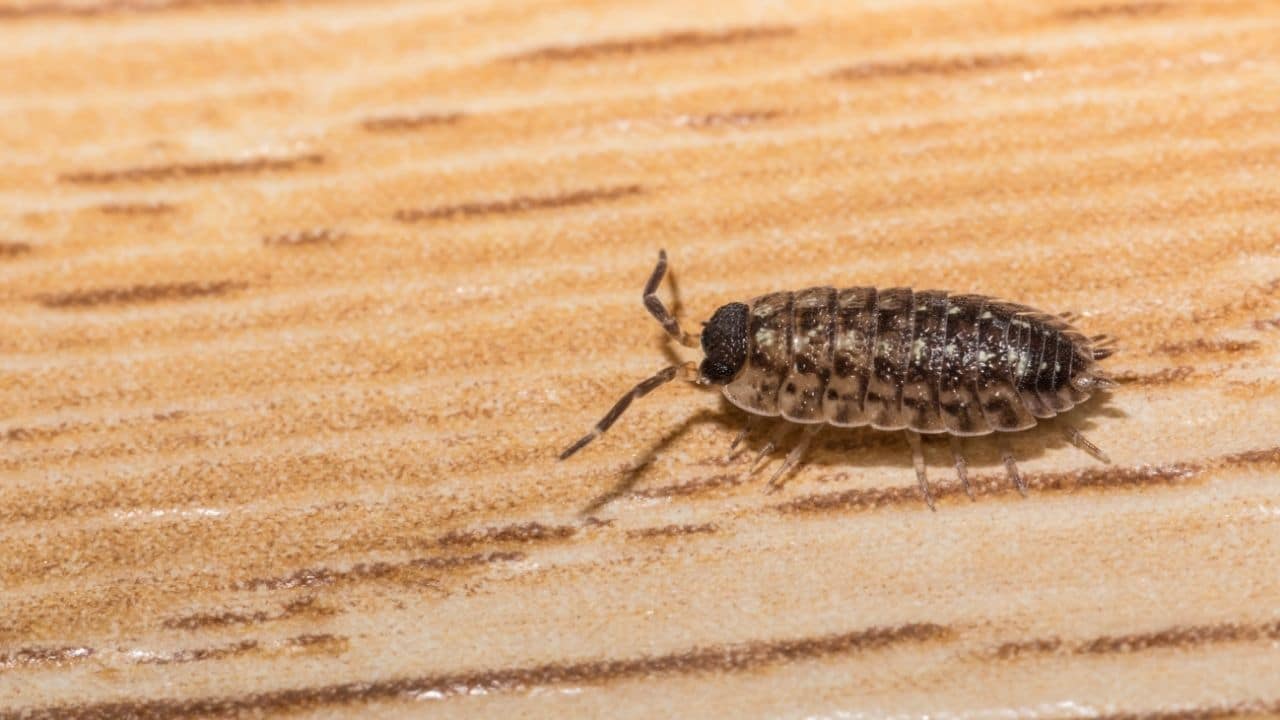
The peach isopod (Armadillidium Nasatum) is also known as the Nosy Roly Poly. Its colors vary, with some being a light peach tint and others darker, almost orange in color.
On rare occasions, a grey wild-type will appear. This species prefers good airflow and likes to hide in a wet location.
They will hide under cork bark slabs in large numbers.
The peach isopods like to eat, so do give them enough food as much as possible. Especially if there are different types of isopods in the habitat, you want to make sure all your isopods are eating well.
2. Clown Isopod
The clown isopod (Armadillidium species, A. klugii) is without a doubt one of the most vibrant isopods. The vibrant red-orange skirts with white and/or yellow specks must be seen to be believed.
Although they prefer a moist place to hide. They need sufficient ventilation and prefer things to be on the drier side.
Warm temperatures are thought to make this species more prolific, and I have noticed faster reproduction throughout the summer.
This isopod also appears to prefer more protein than other isopods.
Early on, I had a few of them die, but they began to thrive once I stopped misting and had a relatively dry and mossy hydrating station.
3. Zebra Isopod
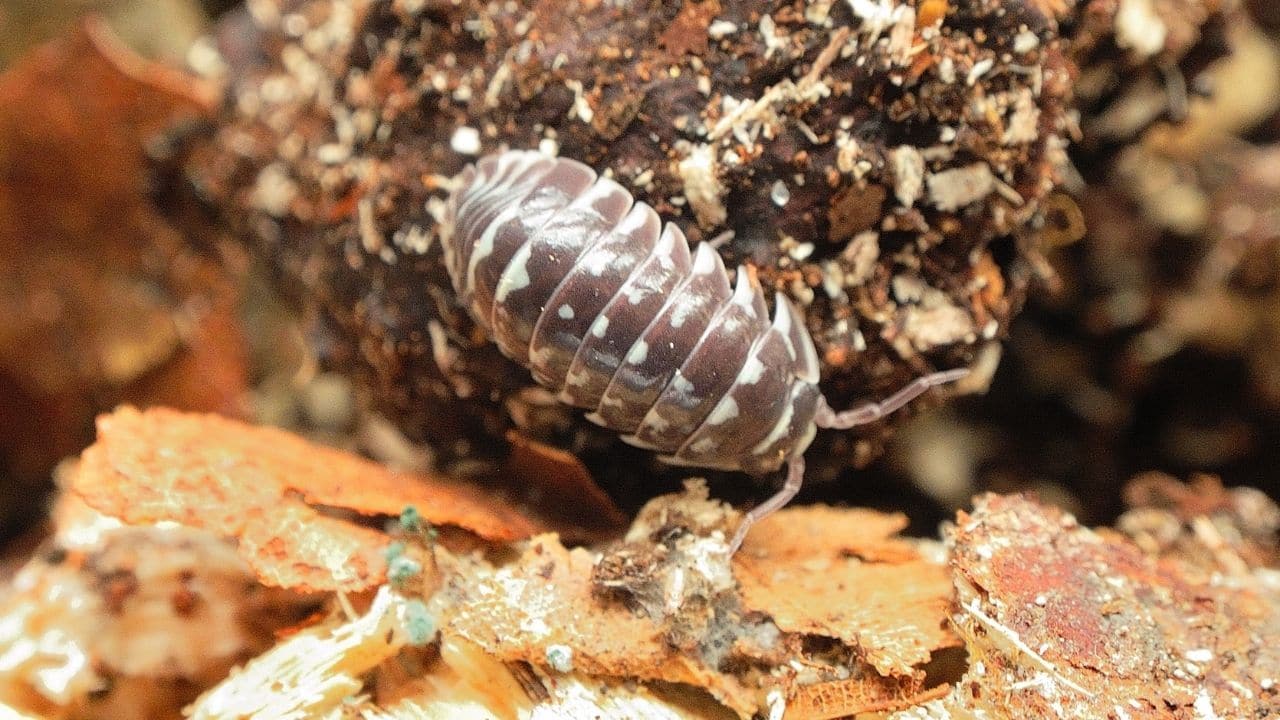
Zebra isopods (Armadillidium maculatum) are some of my favorite isopods of all time. The isopods are not only attractive in their striped design, but they are very hardy and prolific.
They make excellent hobby isopods because of these qualities. Zebra isopods prefer a well-ventilated environment and may survive on a relatively dry substrate providing they have a moist location to retreat to.
I’ve utilized these isopods as a cleanup crew for an aquarium.
4. Yellow Dot Isopod
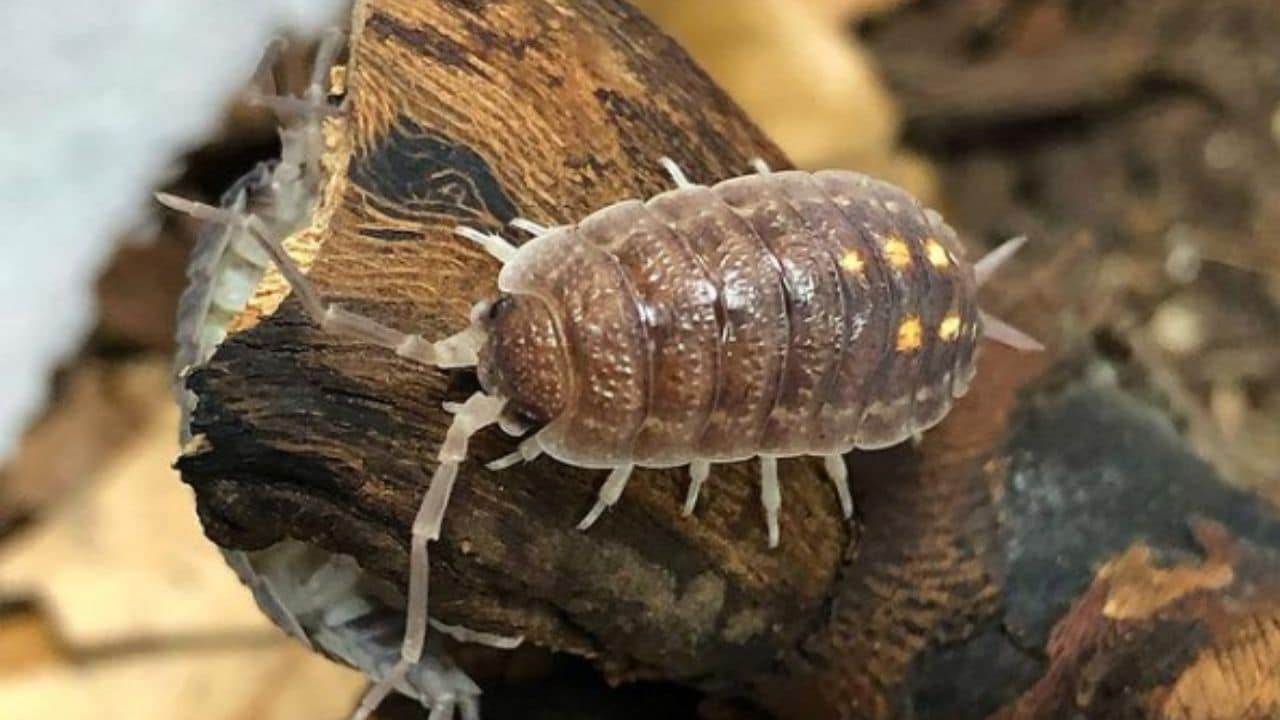
Photo Credit: @tarabiron3 on Instagram!
The yellow dot isopod (Porcellio ornatus) is one of the most hardy and prolific species of Spanish Porcellio isopods.
There are various morphs to choose from. This morph is generally dark gray in appearance, with some lovely, varied yellow patterns on the carapace’s terminal end.
It’s an active species that prefers to live in areas with plenty of ventilation and damp hides, with the rest of the enclosure kept a bit dry.
These creatures have a voracious hunger for protein, and if they’re hungry, they’ll happily (and painlessly) chew on your skin.
5. Powder Blue Isopod
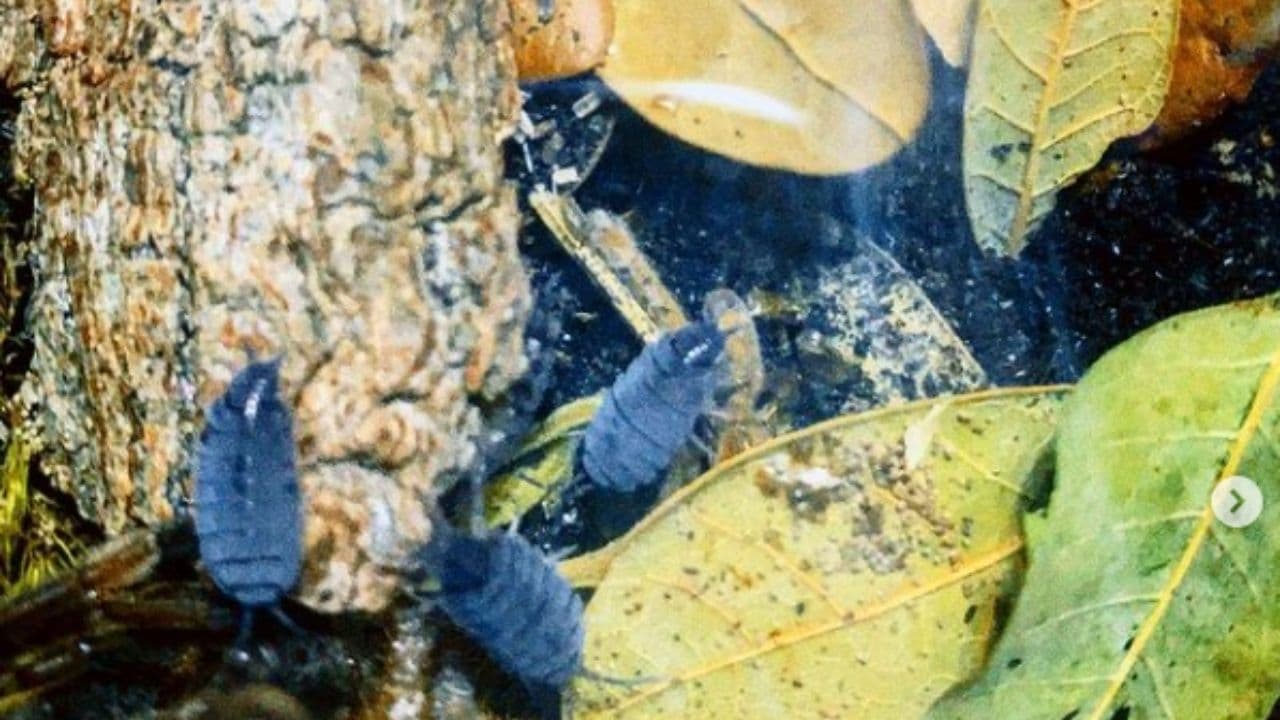
Photo Credit: @exotic.nine on Instagram!
Powder blue isopod (Porcellionids pruinosus). This unusually titled species seems more like a silverish-gray color than a genuine blue, but it’s still an attractive isopod.
It really is incredibly quick. They are highly prolific isopods with a huge appetite.
They are quite resilient of changes in humidity and ventilation for an isopod. Even though it requires access to a damp place to hide, it thrives in the heated, dry environment of my bioactive vivarium.
These characteristics making them one of the best options for a bioactive vivarium, especially those that are arid.
This species doesn’t really do as well in excessively humid vivarium with restricted airflow, as I’ve seen.
This isopod, however, is exceptionally resilient. It tends to outcompete the other species with which it is housed.
6. Dalmatian Isopod
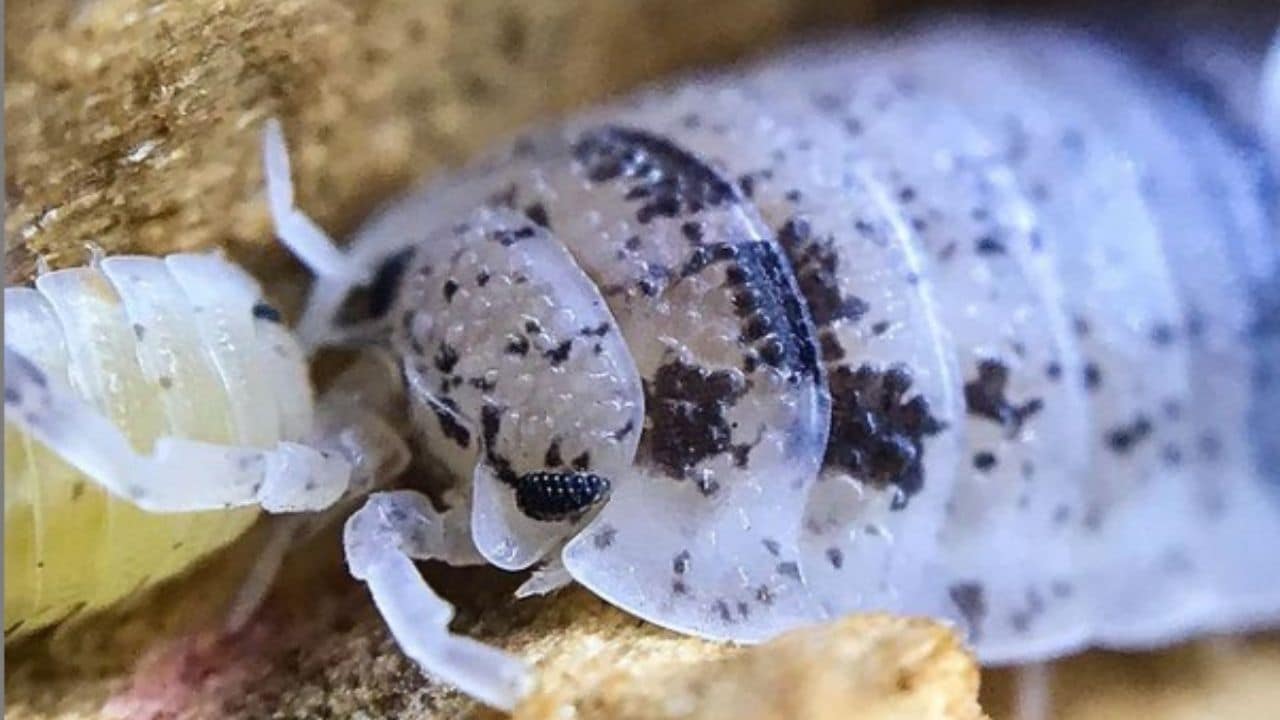
Photo Credit: @the_snake_hissperer on Instagram!
Dalmatian isopod (Porcellio scaber) because of its white background hue with irregular patches and flecks of wild-type color. This mutation of the Porcellio scaber is called after the Dalmatian dog.
Some isopods have black splotches all over their bodies, while others have very little gray pigment.
This resilient morph can tolerate a wide range of humid and ventilation, but it requires a moist hide. It is moderately productive and has a healthy appetite.
7. Orange Dalmatian Isopod
The orange Dalmatian isopod (Porcellio scaber). This isopod is a cross-breed between the Dalmatian isopod and the Spanish Orange.
The offspring resembled wild types, but the following generation produced a couple of orange Dalmatians. The quantity of orange displayed by each individual differs.
These isopods are a bit on the large size and they have a big appetite, like the majority of isopods.
8. Dairy Cow Isopods
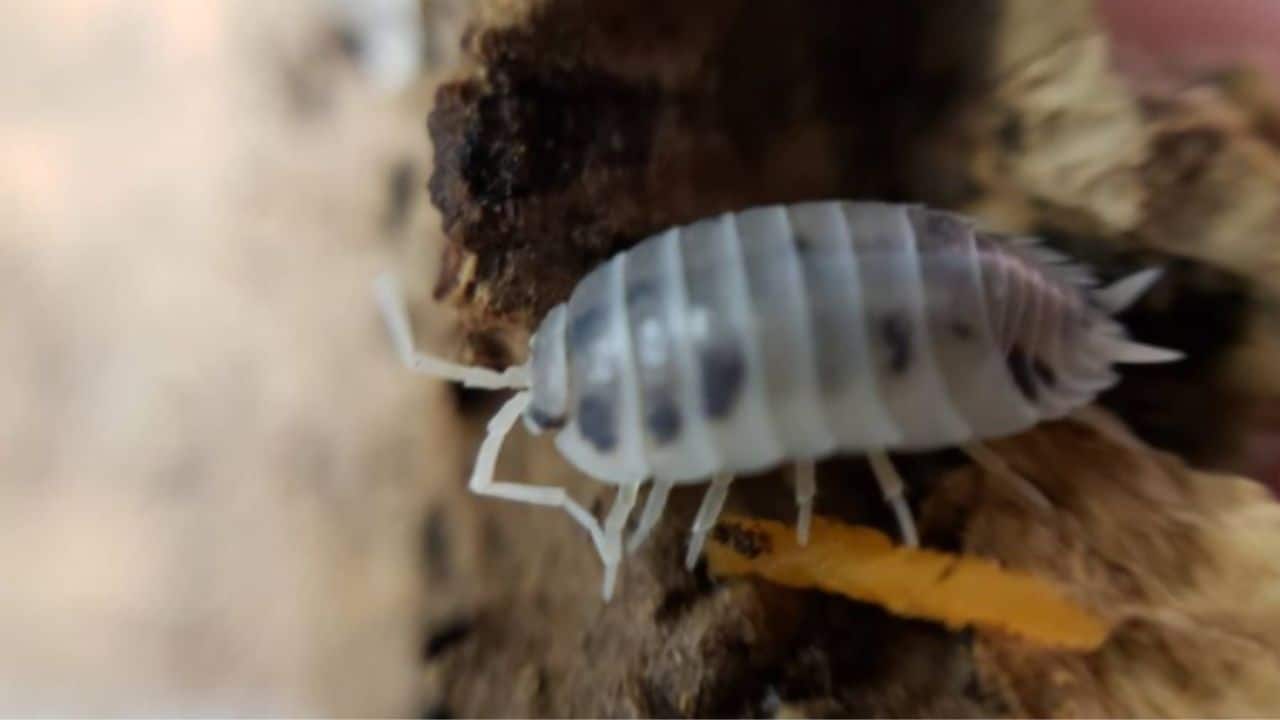
Photo Credit: @the.wicked.witch on Instagram!
The dairy cow isopod (Porcellio laevis) is a fast-moving, somewhat big isopod. It reproduces rapidly and is more conspicuous and livelier in its habitat than many other isopod species.
In contrast to its near cousin, P. scaber (scaber meaning “rough”), the species name laevis means “smooth.” P. laevis is not only larger and more abundant than P. scaber, but it also has a sleeker, shinier carapace.
The term ‘Dairy Cow’ refers to the morph’s random black spots on a white or pale white body. Though the effect is like Porcellio scaber’s ‘Dalmatian’ morph, the ‘Dairy Cow’ has a cleaner appearance.
They also have a sleeker, shinier exoskeleton.
The pattern appears to be more consistent. In P. scaber, some isopods are almost all white with very few dark markings, whereas P. laevis have a good dark marking distribution on them.
It prefers a somewhat wet substrate as opposed to dry and super humid.
9. Dwarf Striped Isopods
Dwarf Striped isopod (Nagurus cristatus) this is a tiny species. It’s considered to reproduce by parthenogenesis, which means it’s all female species that duplicates itself genetically.
This species appears to be an excellent fit for a vivarium.
They do have a tendency to die unexpectedly, so it’s best to get more, so when this happens your entire colony isn’t wiped out.
10. High Yellow Isopods
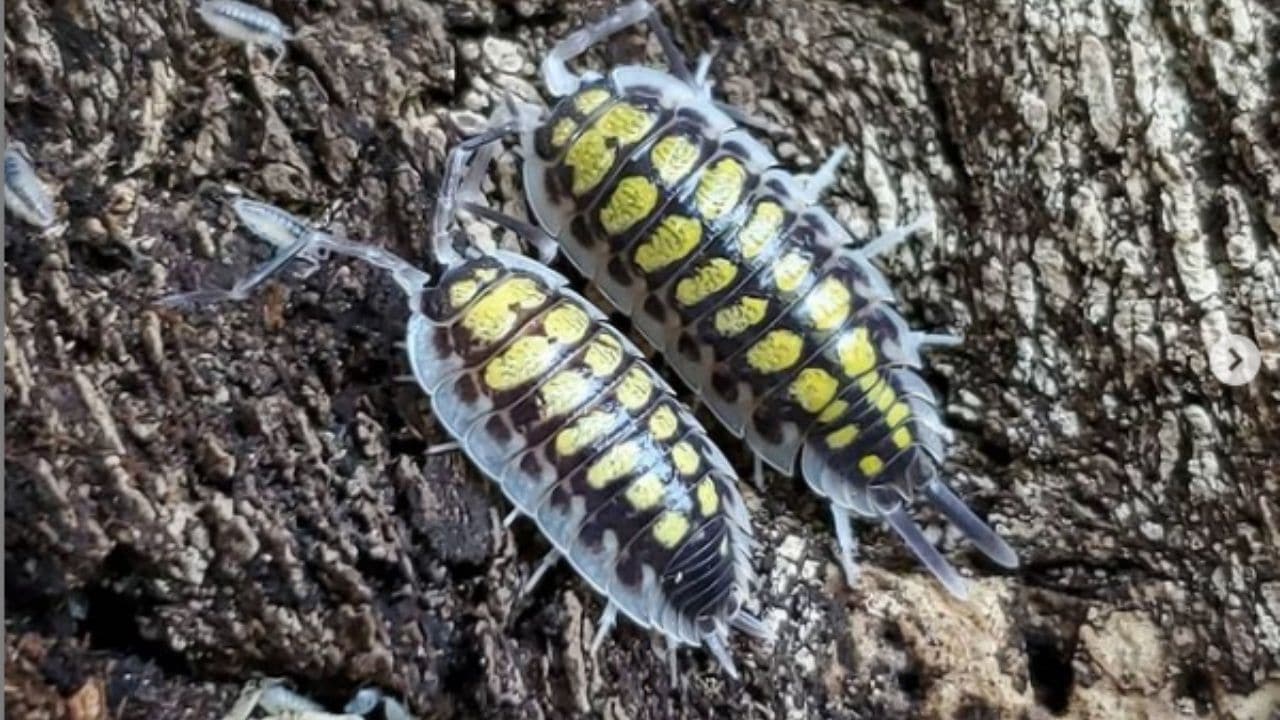
Photo Credit: @zygentomology on Instagram!
High Yellow isopods (Armadillidium vulgare) are beautiful isopod females with frequently yellow marks. I spotted one with exceptionally high yellow a few years ago.
We noticed a few others in the area that had more yellow than typical, albeit not quite as intensely.
I brought a couple of males and the colorful females home from the same location, and it appears that the females’ coloration stays true several generations later.
I have a large number of baby isopods and am anticipating to see how they grow.
Frequently Asked Questions about Best Isopods for a Vivarium
Should I watch for anything specific if I have more than one species in my vivarium?
Some isopods can be aggressive, especially when it comes to food. Ensure all your isopods are getting food. If you notice a problem, you may have to separate them.
My isopods are so colorful and pretty. I would like to be able to see them better, but they are always hiding.
Hiding is second nature for isopods. Try purchasing a glass enclosure and try slightly elevating the substrate by 1/4 of an inch or less if you can see it.
Conclusion
Isopods are unique little creatures that can be fun to observe.
Just avoid handling them too much or none at all unless it’s needed.

